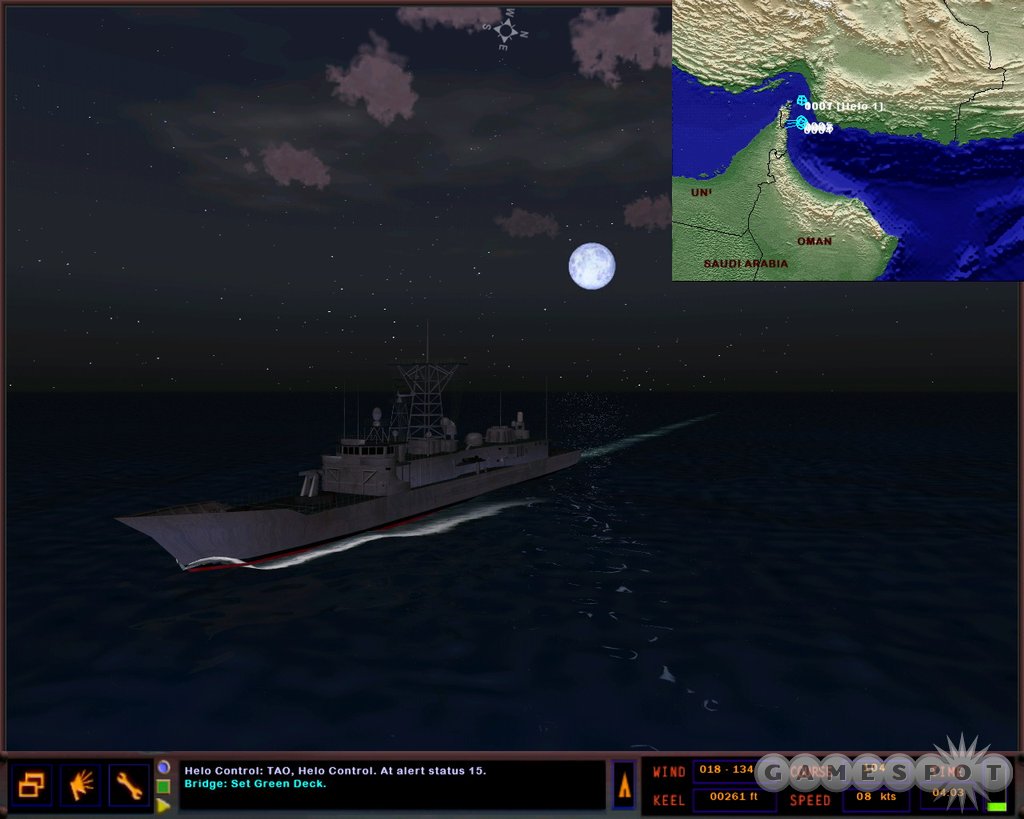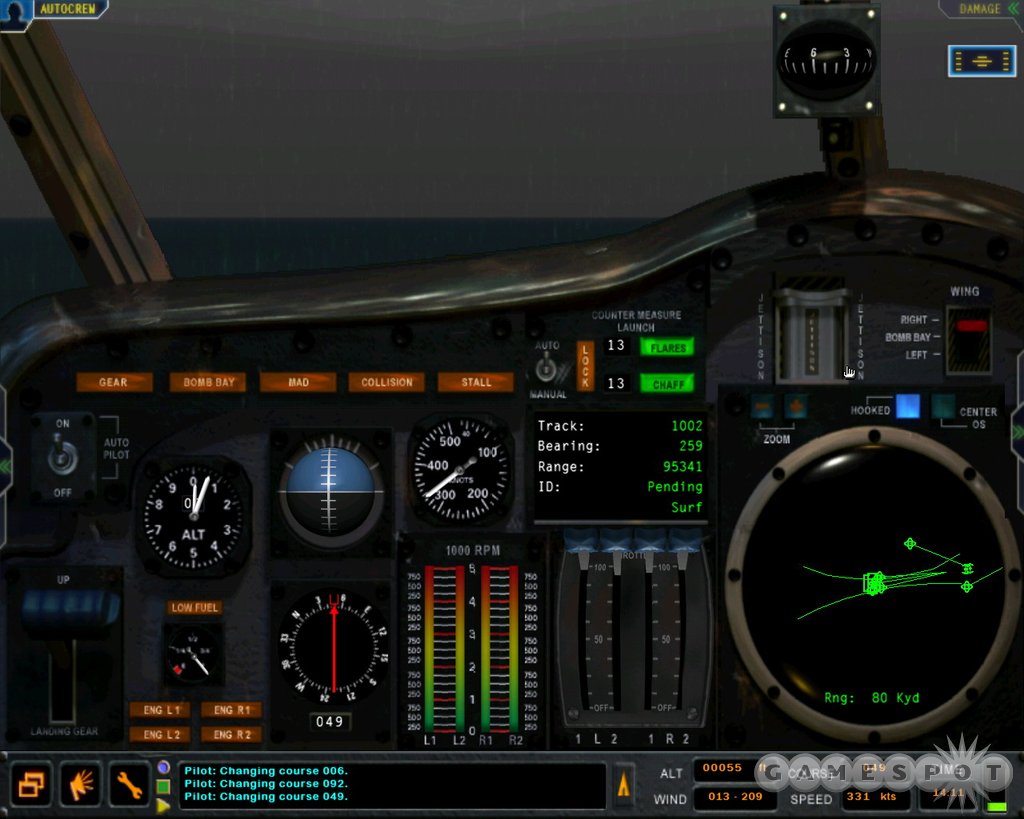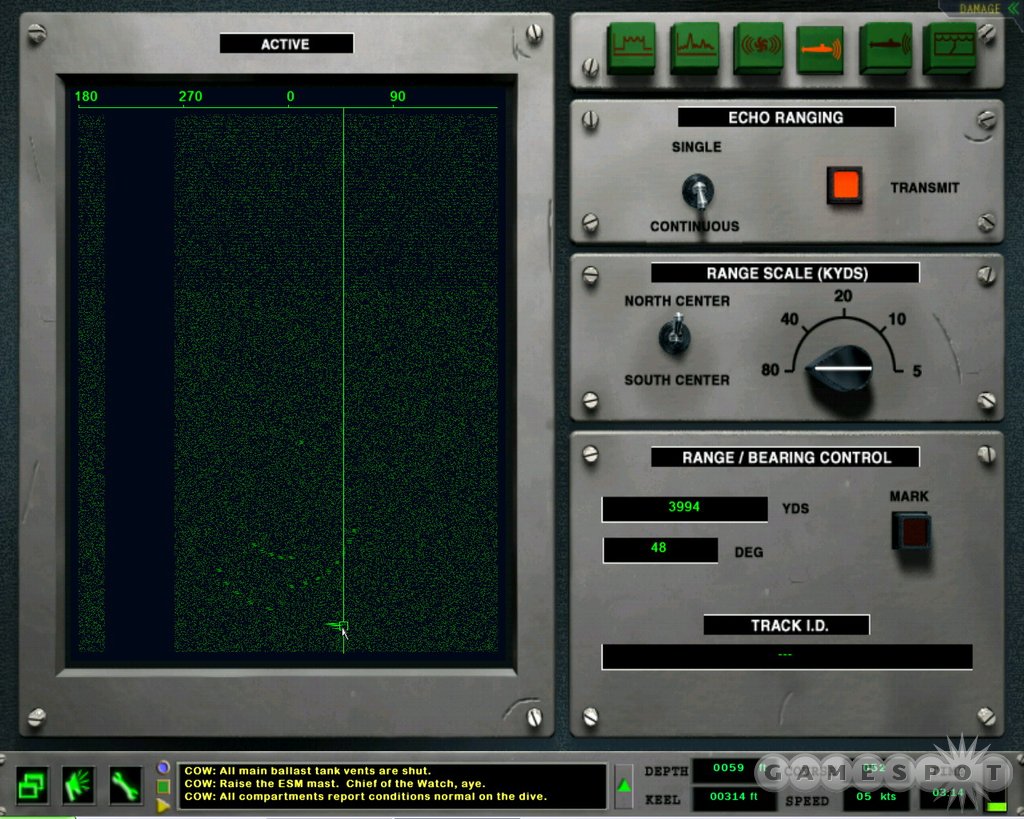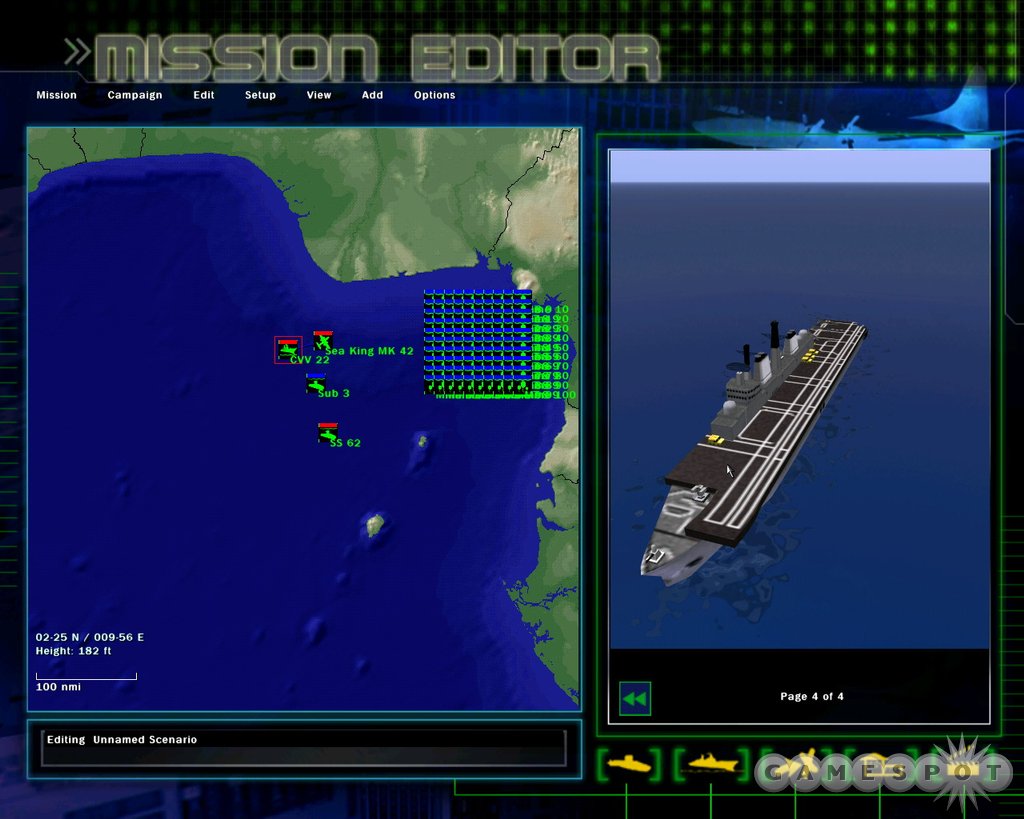The phrase "survey sim" is enough to make hardcore simulation fans run for cover. These types of games, which attempt to cover an assortment of different weapon platforms in a single package, generally are aimed at casual users and rarely have the fidelity of simulations that focus on one thing. Leave it to Sonalysts to create a modern-day naval survey simulation that has the breadth and depth of the oceans where the combat it simulates takes place.

Sonalysts' last game, Sub Command, let you control Seawolf, 688(I), and Akula submarines and was notable for its slavish attention to detail despite modeling multiple subs. Dangerous Waters includes those subs, plus the ultraquiet diesel/electric Kilo class, and it also lets you take command above the waterline by including an Oliver Hazard Perry FFG-7 destroyer, a P3-C Orion reconnaissance/antisubmarine plane, and an MH-60R antisubmarine helicopter. There's enough in this package to keep even the most demanding naval sim fan happy for years.
Anyone who has played Sub Command will be familiar with the insane level of detail modeled in this game. Each platform has multiple stations, ranging from radar and sonar rooms to weapon control and navigation consoles, and you are free to skip back and forth between stations to perform nearly all of the tasks associated with operating these subs, ships, and aircraft. Each station represents the one found in its real-world counterpart, so the sonar station in the Akula looks nothing like the more advanced station found in the Seawolf. Each platform also has some unique capabilities that must be mastered, and learning even the basics of how they all work--both individually and in conjunction with other platforms--requires a huge time investment.
A dizzying array of equipment is modeled, and those unfamiliar with it will be lost immediately. Beyond the myriad torpedoes, missiles, and other weapon systems (many of which are programmable, adding an extra layer of complexity), there are several types of sonobuoys, sonar, radar, and other equipment, each with multiple settings to worry about. The interface for accessing and programming everything is fairly slick once you get used to it, but that assumes you already know the basics of naval warfare. For example, hunting a submarine in the destroyer requires plotting a route for the helicopter, knowing what types of sonobuoys to employ (along with where to drop them and what settings to use), and managing multiple data telemetry screens to read the information coming from the buoys. Beyond that there is the ship's own sonar system, towed array, and radar system to monitor, navigation orders to give, and a host of other duties to perform. Once you find the sub, you then have to deal with the problems of plotting a firing solution, selecting a weapon that will get the job done, and launching it at the right time, and antisub warfare represents just a tiny fraction of what this game offers.
Dangerous Waters expands on the fascinating campaign system pioneered in Sub Command, and it works very well. The premise is that there is a revolution in Russia, and you can command American, Chinese, or Russian vessels and aircraft in a fairly realistic simulation of war. At the start of the campaign it is important to recon the opposing side to figure out its intentions, but if you get too aggressive or are spotted spying, you can trigger hostilities prematurely. The American units are the most interesting to play in the campaign since it's not clear for a long time which side of the revolution you should support, and it's rare to see a simulation model the real-world complexities of a modern-day Cold War so well. Although the basics of the campaigns are always the same, the ability to play it from the perspective of all of the sides while never knowing exactly how or when events will unfold offers nearly limitless replayability. A variety of single missions are available for those who don't want to play the entire campaign, and a full mission editor is included if you want to roll your own scenarios.

Multiplayer is interesting in that you are free to each take command of an individual ship, plane, sub, or helicopter, but you also can work cooperatively by crewing different stations on the same platform. This opens up all sorts of interesting possibilities, like one person commanding the FFG-7 while a buddy flies its helicopter and sends data back, or one person classifying targets while another works out firing solutions on the Target Motion Analysis screen. It would take a lot of like-minded friends to crew an entire sub, ship, or plane, but at least the possibility exists.
While the subs and destroyer work like most people would expect, aircraft are handled a little differently. The flight model is rudimentary compared to a dedicated flight simulator, and both the Orion and the MH-60R are designed to be flown on autopilot 99 percent of the time so you are free to focus on other, more important stations. It is possible to grab a joystick and control the aircraft manually, but flying these types of aircraft is so much more boring than operating the other stations that we can't imagine anyone would want to spend a lot of time in the pilot's seat. The bottom line is that you won't miss out on anything if you don't have a joystick or gamepad, because the flight simulation aspects of this game are extremely basic.

Silent Hunter III set the bar so high for graphics in a naval sim that Dangerous Waters doesn't even have to bend over backward to limbo under it. The 3D graphics are merely functional, with blocky ships, simple textures, weak special effects, and no flair whatsoever. That's understandable considering this game is intended for the type of people who disable the 3D view because it "isn't realistic," but the visuals haven't progressed much since Sub Command was released back in 2001. The individual stations inside the ships are modeled using detailed but fairly low-resolution 2D graphics that add a lot of flavor to the sim. Most importantly, the screens you spend the most time looking at, like the waterfall displays and nav map, are all rendered clearly, so although the graphics don't necessarily enhance the gameplay, at least they never impede it.
Considering this game comes from a company that specializes in acoustic research, the sound effects and music are pretty bad. Fortunately the soundtrack can be switched off, but that still leaves you listening to flat crew voices and mechanical sound effects that merely get the job done. On the plus side, if you have a microphone, speech commands are fully implemented, and they are a great alternative to clicking through interface menus.
Although it is possible to automate practically every aspect of the game, there is still so much to understand and manage that newcomers to the genre should steer clear. This is the type of sim that caters to people who already know the differences between VLAD, DICASS, and DIFAR sonobuoys, know what TMA is (and how to do it), and know the basic roles and capabilities of all of the platforms modeled in the game. If Silent Hunter III made your head spin, Dangerous Waters will tear it clean off. It is complex, demanding, and about as far from casual as a sim can get.
That said, the 570-page spiral-bound manual included with the deluxe version of the game does an excellent job of covering every aspect of the game in great detail, so Dangerous Waters is learnable if you're willing to put in a lot of reading time. A training section provides newcomers with easy access to everything they need to know about the basics, including the types of sonobuoys to deploy in various situations and a description of the basics of sonar, and Sub Command vets are free to flip directly to the detailed descriptions of any of the platforms they want to try out and dive right in. Those who don't opt for the deluxe edition are stuck with the same manual in PDF format, and the printed version is definitely worth the extra 10 bucks.

Even if you are interested only in submarines and already have Sub Command, the inclusion of the Kilo class is practically worth the price of upgrading all by itself. The subs modeled in the previous game were all nuclear-powered, and operating a diesel/electric hybrid like the Kilo offers an entirely new set of strengths and weaknesses to learn. While it can't operate underwater for years at a time like the nuclear subs, running on battery power makes it the quietest sub in the entire game, and it is possible to detect other units in a Kilo from much longer ranges than they can "see" you. The symbiotic relationship between the destroyer and helicopter is fun to explore, and the Orion is interesting enough that an entire sim could be dedicated to it alone. Fortunately we don't have to deal with that compromise, as Dangerous Waters is an embarrassment of riches for naval sim fans who may feel a little guilty about having to pay so little for so much.